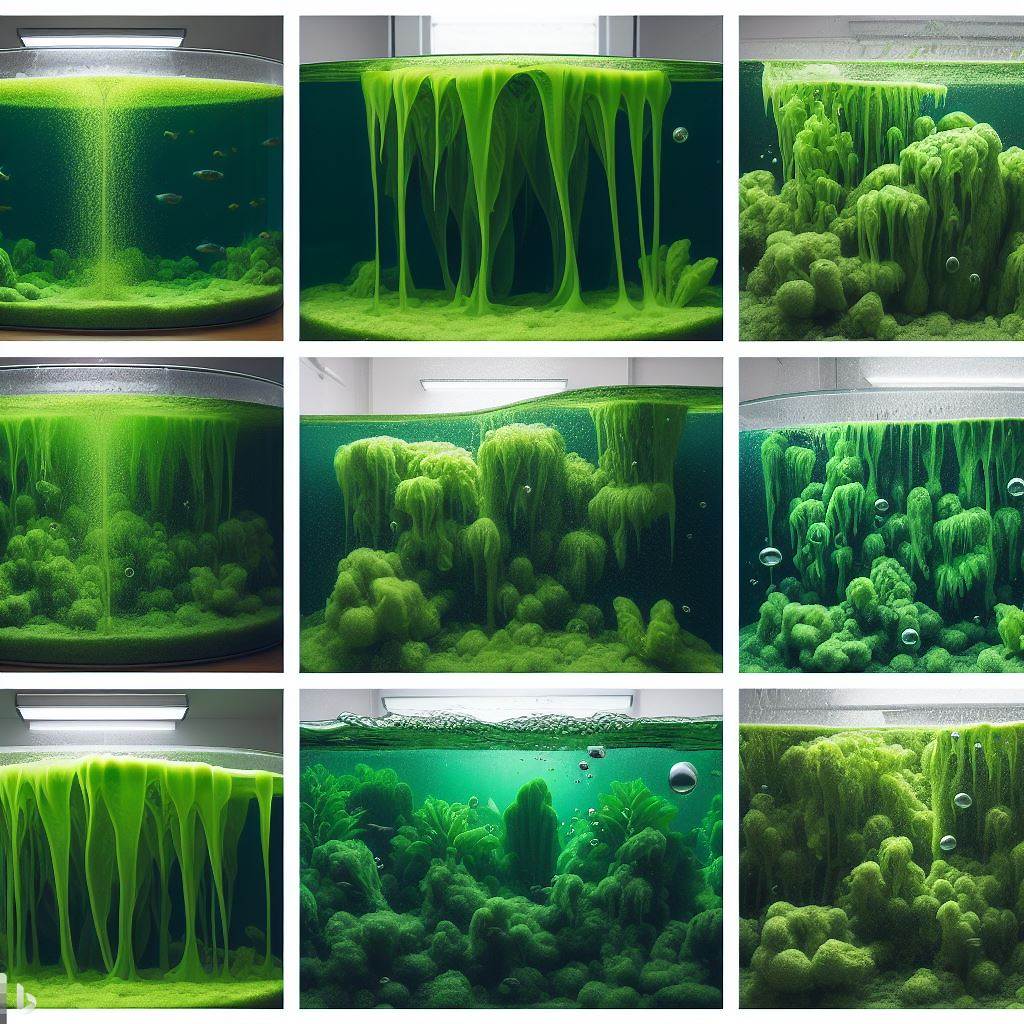The types of algae commonly found in swimming pools are diverse, and their treatment requirements, as well as the chemical agents used, also vary. Improper selection can not only lead to water quality deterioration but also cause further degradation of the water quality. Therefore, mastering various types of algae, choosing the suitable algaecides, and strictly following the instructions are of great significance to ensuring the safety of swimming pool water quality and the normal use of swimming pool facilities. Now, let me explain to you how to choose different algaecides for different types of algae.
Classification and Characteristics of Common Swimming Pool Algae

Green Algae
This is the most common type of algae in swimming pools. It reproduces in large quantities, making the water turbid and reducing the transparency of the pool water, resulting in a green tint. Although easier to manage compared to other types of algae, green algae can reproduce quickly.
Black Algae
It generally appears in the shaded parts of the pool or in tile joints, making it difficult to remove. Black algae have a higher chlorine resistance, significantly reducing the effectiveness of disinfectants.
Blue-Green Algae
Blue-green algae are toxic plants that can irritate human skin and respiratory tracts, and even cause more severe health problems. Touching or ingesting water containing blue-green algae may cause symptoms like vomiting, diarrhea, and fever.
Brown and Yellow Algae These algae can discolor pool water, affecting its aesthetics and making pool cleaning challenging.
How to Choose Algaecides Based on Algae Type
How to deal with Green Algae?
Sodium Hypochlorite or Liquid Chlorine This is a type of chlorine that can quickly kill green algae and help purify swimming pool water.
Copper-Based Algaecides Copper ions can effectively inhibit the growth of green algae.
Multifunctional Algaecides A new type of algaecide containing copper oxide, capable of killing green algae and inhibiting its reproduction.
How to deal with Black Algae?
Sodium Hypochlorite or Liquid Chlorine Although black algae are more chlorine-resistant, using larger amounts and continuous application can still be effective.
Specialized Black Algae Algaecides There are algaecides on the market specifically designed to tackle black algae, with strong penetration capabilities to thoroughly eliminate the algae.
High-Concentration Copper Ion Algaecides Some algaecides containing high concentrations of copper ions are also effective against black algae.
How to deal with Blue-Green Algae?
Block Nutrients Reducing the phosphorus content in the water can inhibit the growth of blue-green algae.
Copper-Based Algaecides Like green algae, blue-green algae are also sensitive to copper ions, and copper-based algaecides can inhibit their growth.
Enzyme Products These products can break down the nutrients required by blue-green algae, inhibiting their growth.
Measures to Prevent Algae Regrowth
A. Regular Pool Cleaning To prevent the resurgence of algae in the pool, regular cleaning is essential. This includes removing debris from the pool, cleaning sediments on pool walls, and cleaning filters. Frequent cleaning removes potential algae growth points, maintaining pool cleanliness and reducing the chances of algae blooming.
B. Maintain Water Balance Maintaining water balance is important to prevent algae growth. This requires periodic testing and adjustment of the pool water’s pH, alkalinity, and hardness. Maintaining an appropriate chlorine level is also crucial as it can effectively kill algae and other harmful microorganisms. Maintaining water balance creates an unfavorable environment for algae growth.
C. Use Physical Prevention Methods such as UV Lamps In addition to chemical prevention, physical methods such as UV lamps can also be used. UV lamps can kill algae and other organic matter in the water, helping maintain pool water clarity. This process is safe for the body and leaves no harmful residue in the water.
In swimming pools, choosing the appropriate algaecide is key to effectively controlling and eliminating algae. Different types of algae require different algaecides, so understanding the types and characteristics of algae and choosing the appropriate algaecide is crucial for cleaning efficiency. Proper application of algaecides not only effectively eliminates algae but also reduces damage to pool facilities and environmental impact.

 Instant
Quote
Instant
Quote Email
Us
Email
Us